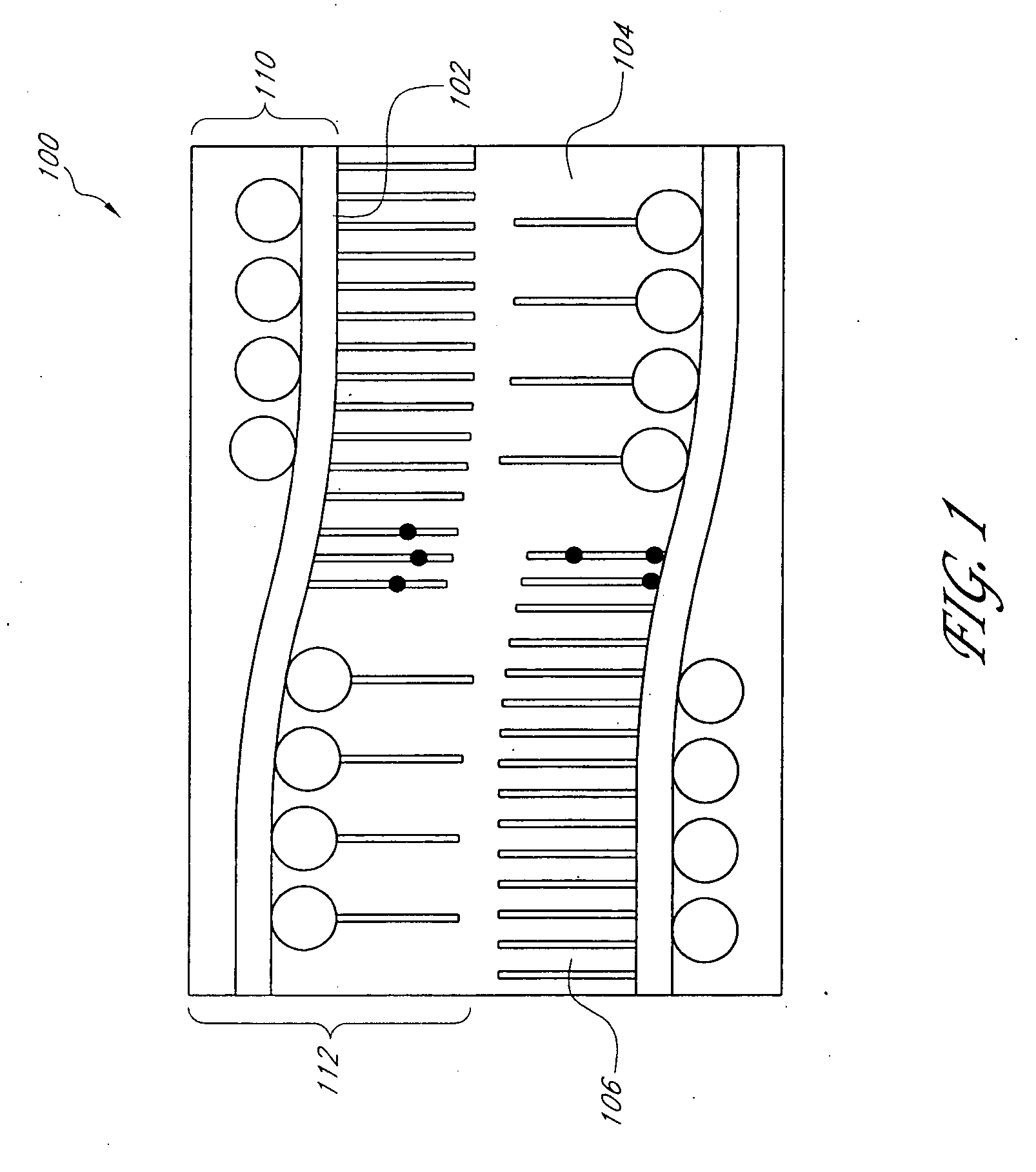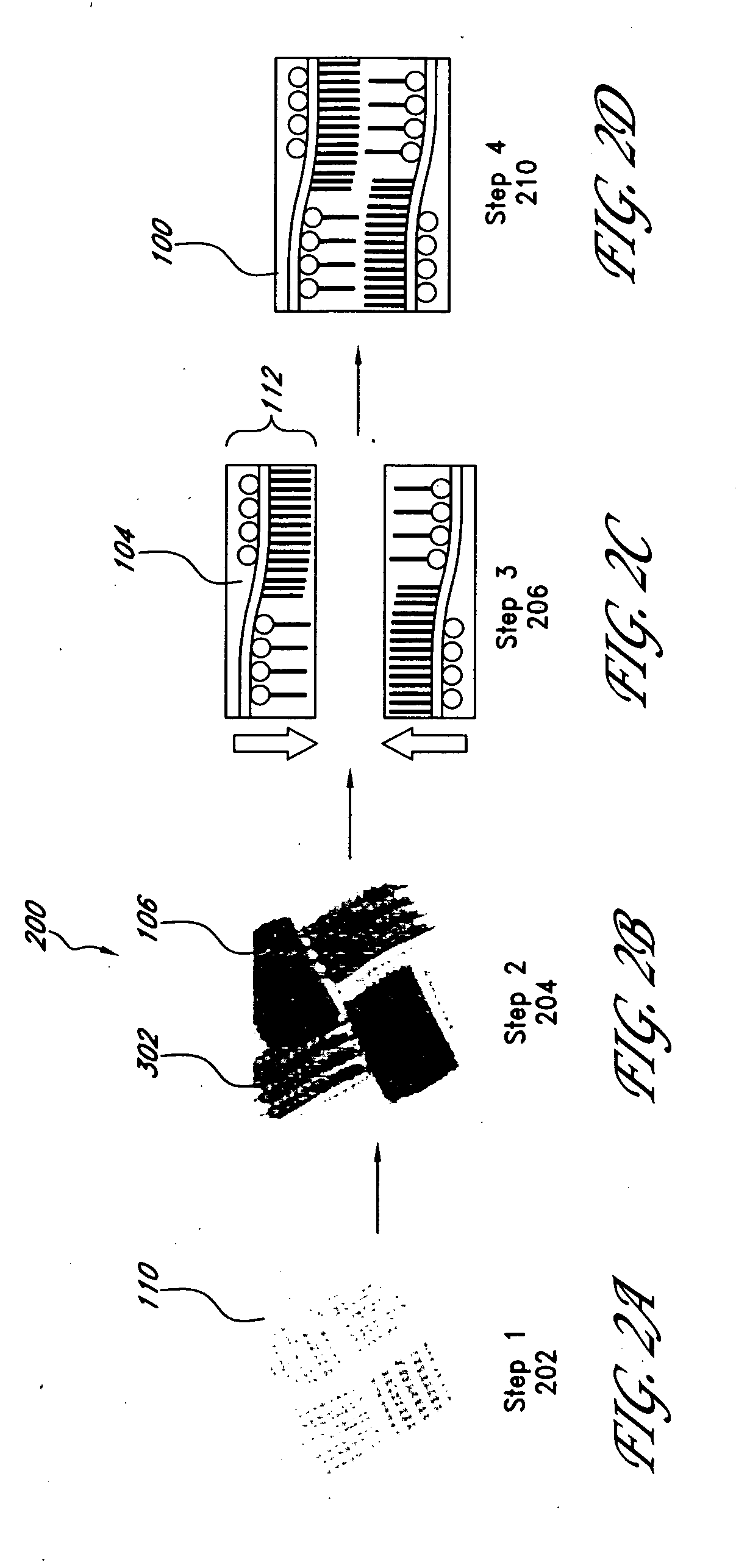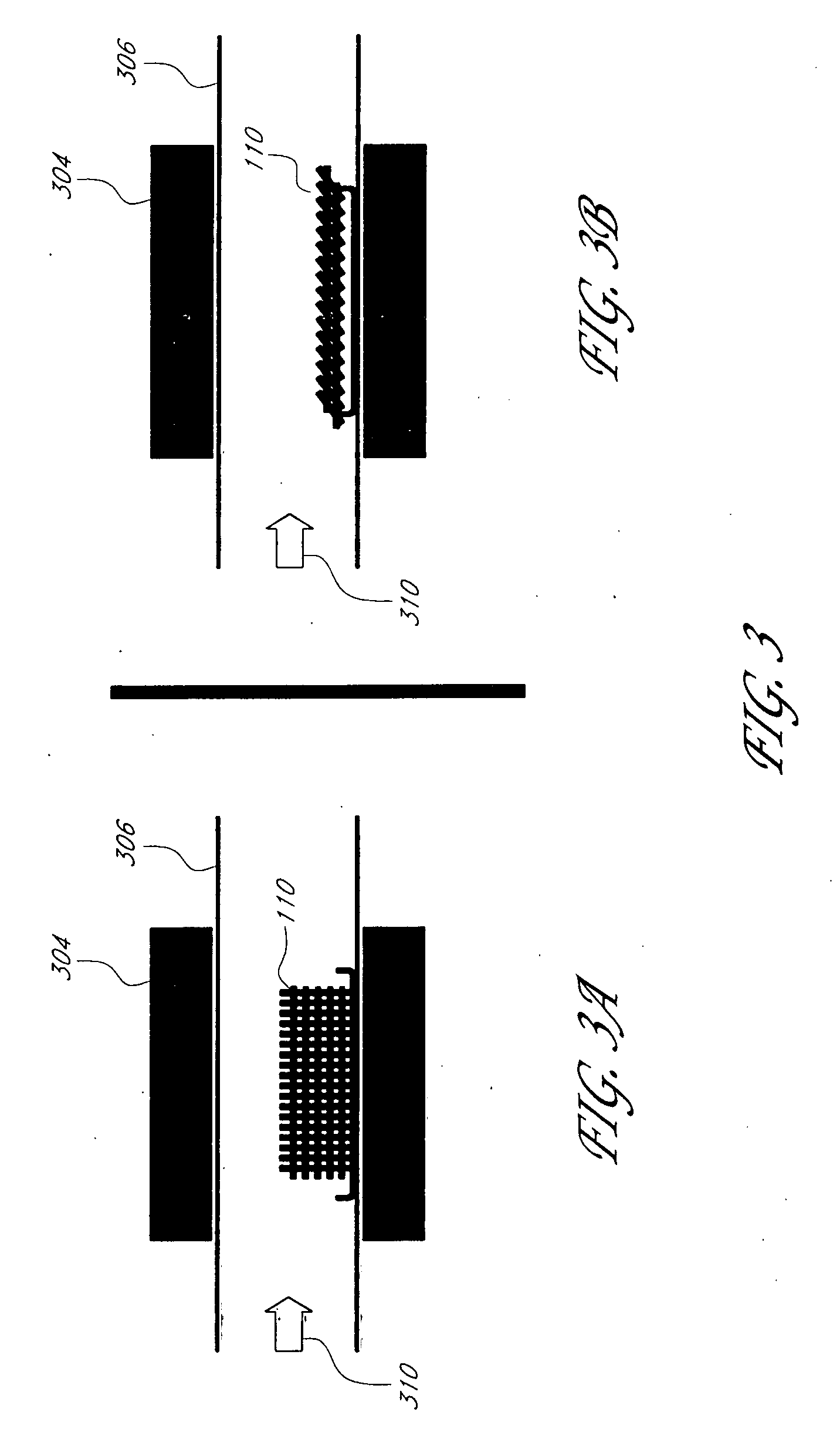Three-dimensionally reinforced multifunctional nanocomposites
a nano-composites, multi-functional technology, applied in the field of composite materials, can solve the problems of low interlaminar fracture toughness of cfrcs, and weakness of 1-d and 2-d cfrcs, and achieve the effect of improving the reinforcement structur
- Summary
- Abstract
- Description
- Claims
- Application Information
AI Technical Summary
Benefits of technology
Problems solved by technology
Method used
Image
Examples
examples
[0049] In the following examples, testing is performed on 3-D nanocomposites and their 2-D counterparts to illustrate the property improvements which may be achieved through embodiments of the 3-D nanocomposite 100. In particular, in-plane and interlaminar mechanical properties, mechanical damping, thermoelastic response, and thermal and electrical conductivities are examined. The 3-D nanocomposites 100 tested are laminates formed as described above, using a 3-D fiber preform 302 of SiC plain-weave fiber cloths having CVD-grown MWCNTs extending approximately perpendicular to the plane of the SiC fiber cloth and a matrix of DGEBPA-AE. The nanocomposites further possess weight fractions of the matrix, SiC fiber cloth, and CNTs of approximately 35%, 63%, and 2%, respectively. To assess the influence of the through-thickness CNTs on performance of the 3-D nanocomposites 100, 2-D baseline composites were similarly formed without the MWCNT reinforcement.
[0050] Studies are also presented ...
examples 1-4
Interlaminar fracture
[0051] Examples 1-4 illustrate the advantages of using of 3-D nanocomposites over their 2-D counterparts to increase the delamination resistance of the composite. One of the most commonly observed damage modes in laminated composites is the separation of adjacent plies, or delamination. Delamination in laminated composites may arise from one of the many events, including low velocity impacts, fatigue loadings, eccentricities in the load path, or by geometric and structural discontinuities, such as holes, edges, or ply drops, that act as stress raisers within the area adjacent to the discontinuity. With the increased use of laminated fiber reinforced composite materials in primary aircraft and marine structural components, delamination failure is a significant concern. Therefore, interlaminar fracture toughness testing is performed to determine interlaminar fracture toughness for two different modes of loading, Mode I, an opening mode, and Mode II, a sliding mod...
examples 5-6
In-plane Mechanical Characterization
[0057] Examples 5-6 illustrate the effect of CNTs on the in-plane mechanical properties of 2-D baseline composites and 3-D nanocomposites. The in-plane tensile strength, elastic modulus, and flexural toughness of the two composite systems are measured by 3-point, in-plane flexure loading based upon ASTM Standard D790-00, titled, “Standard Test Methods for Flexural Properties of Unreinforced and Reinforced Plastics and Electrical Insulating Materials.” Average values for three test specimens are reported in Table 2 below, with the percent change in the 3-D nanocomposite property values over the 2-D baseline composite in parentheses.
TABLE 2GIC of 2-D baseline composites and 3-D nanocomposites.FlexuralFlexuralFlexuralStrengthModulusToughnessExampleMaterials(MPa)(GPa)(N mm)5C2-D Baseline 62.1 ± 2.123.1 ± 0.35.8Composites63-D Nanocomposites150.1 ± 1.424.3 ± 0.230.4(240%)(105%)(524%)
[0058] Examples 5-6 demonstrate that the through-thickness CNTs may ...
PUM
| Property | Measurement | Unit |
|---|---|---|
| Volume | aaaaa | aaaaa |
| Volume | aaaaa | aaaaa |
| Volume | aaaaa | aaaaa |
Abstract
Description
Claims
Application Information
 Login to View More
Login to View More - R&D
- Intellectual Property
- Life Sciences
- Materials
- Tech Scout
- Unparalleled Data Quality
- Higher Quality Content
- 60% Fewer Hallucinations
Browse by: Latest US Patents, China's latest patents, Technical Efficacy Thesaurus, Application Domain, Technology Topic, Popular Technical Reports.
© 2025 PatSnap. All rights reserved.Legal|Privacy policy|Modern Slavery Act Transparency Statement|Sitemap|About US| Contact US: help@patsnap.com



